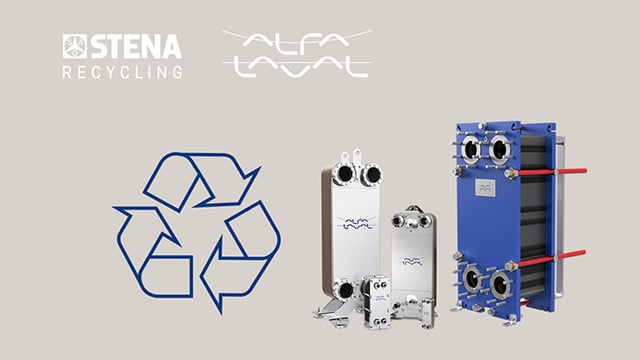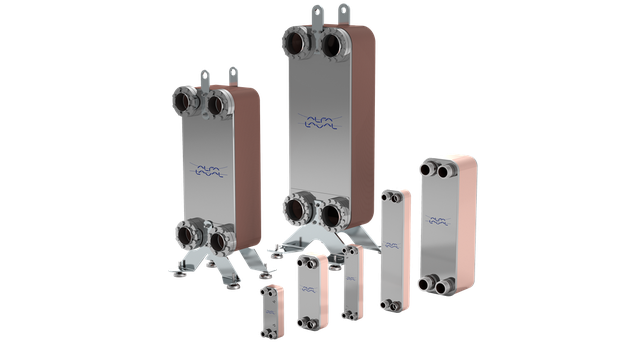CBM
The Alfa Laval CBM line of copper-brazed plate heat exchangers for marine applications offers an ideal solution for demanding installations with limited space. The gasket-free design ensures reliable performance, with stainless-steel plates brazed in a furnace using thin copper foil in between. CBM heat exchangers can be used for duties such as BOG (boil off gas) heating and cooling, natural gas heating, oil heating, heat recovery, refrigeration intercooling and CO2 refrigeration conditioning.
Robust, compact heat transfer performance
- Compact and efficient plate-type heat exchanger
- Flexible temperature range from -196°C to +225°C and design pressures up to 159 bar
- Low hold up volume
- Type-approved by all major class societies
- The range includes models: CBM30, CBM110, CBMH200, CBM400, CBM112, ACMH220, and Heatpac CBM
CBM heat exchangers can support design temperatures from cryogenic (-196°C) up to 225°C, at a maximum design pressure of 51 bar. Even higher pressure applications are covered by the AXPM models, which can withstand extreme pressures reaching 159 bar in a temperature range from -45°C to 225°C, due to its reinforced external carbon-steel frame plates.
Heatpac CBM is a predefined range of CBM30 and CBM110 heat exchangers for fuel – and lubrication oil preheating and heat recovery applications. These includes standard insulation and counter flanges with gaskets and bolts.
The easy way to reduce your energy costs and increase energy efficiency
A refund is just the start of your savings potential with the new exchange programme. Alfa Laval’s innovative heat exchanger technology will significantly increase the energy efficiency of your processes. That means drastically lower power consumption and carbon emissions, along with a significant reduction in your long-term operating costs.

How it works
Two media at different temperatures flow on either side of thin corrugated stainless steel plates that are stacked on top of each other. The two media flow in a countercurrent flow through alternate channels and are held within the plate pack by a fusion-bonded seal around the edge of the plates. The points at which the plates are in contact with each other are also bonded with the same technology, reinforcing the pack against the pressure of the media inside.
The countercurrent flow makes it possible to extract heat efficiently even when there are only extremely small differences between the temperatures of the hot and cold media. This results in notable energy cost savings. In some systems, co-current flows re also possible.
View the animation to learn more.
Helping you secure the gas advantage
A growing number of shipowners are powering their vessels with LNG. Whether you’ve already made that choice or are still exploring the possibilities, Alfa Laval can help you on your way. In over fifty years of work with gas, beginning with cargo and expanding into LNG as fuel, we’ve developed the equipment, knowledge and services to bring you effective solutions. From ensuring safety to boosting efficiency and further reducing emissions, you’ll find what you need to get maximum benefit from LNG.


